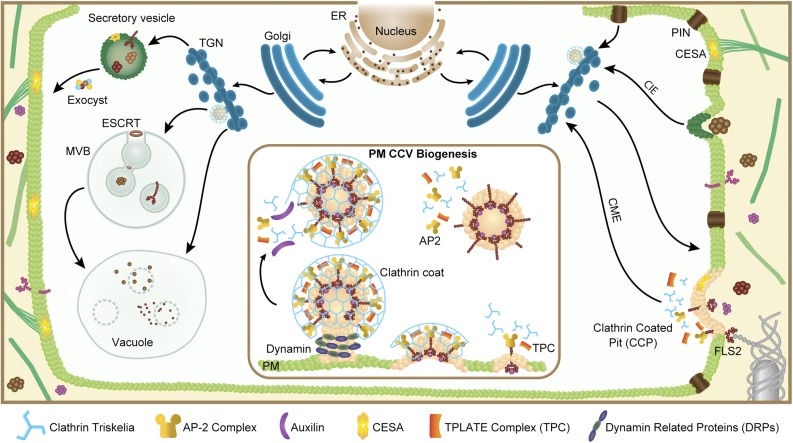Figure 1.
Plant cells maintain several pathways for the distribution of membrane-bound material in both anterograde and retrograde fashions. Newly synthesized proteins traveling through the endoplasmic reticulum (ER) and Golgi apparatus are delivered via membrane transport from the TGN/EE, an organelle acting as a hub in secretory and endocytic trafficking pathways, on to the PM via exocyst-dependent docking and fusion. PM and extracellular material are internalized by multiple means, including CIE and CME. Initiation of CCPs (inset) employs various adaptor complexes, including AP-2 and TPC, which associate with the PM, recognize membrane-associated cargoes (including, for example, the flagellin-sensing FLS2 receptor and the CESA), and recruit the clathrin coat. Following release from the PM, endocytic CCVs undergo uncoating before fusing with the TGN/EE. Endocytosed proteins may undergo recycling to the PM via vesicular trafficking and/or sorting into the late endosome I MVB interior via ESCRT for subsequent vacuolar degradation.

